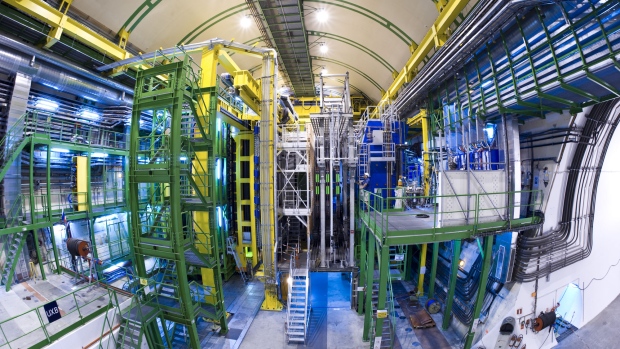New Subatomic Particles Found at CERN, as Predicted by Canadians
By Emily Chung | CBC News
New baryons found at Large Hadron Collider are 6 times more massive than protons
Two new subatomic particles whose existence was predicted by Canadian particle physicists have been detected at the world’s largest particle collider.

The discovery of the particles, known as Xi_b’- and Xi_b*-, were announced by CERN, the European Organization for Nuclear Research today and published online on the physics preprint server Arxiv. They have been submitted to the scientific journal Physical Review Letters.
“In particle physics, you don’t discover something new every day, so it’s certainly very exciting,” said Steven Blusk, a particle physicist at Syracuse University in New York, in an interview with CBC News.
“Nature was kind and gave us two particles for the price of one,” added Matthew Charles, of the CNRS’s LPNHE laboratory at Paris VI University, in a statement.
‘We did have good reason to believe those particles would be there.’– Stephen Blusk, Syracuse University
Blusk and Charles jointly analyzed the data that led to this discovery. The data was generated by the LHCb experiment at the Large Hadron Collider near the border of France and Switzerland. LHCb is an international collaboration involving roughly 750 scientists from around the world.
The new particles are baryons – a type of particle each made up of three elemental subatomic particles called quarks. The protons and neutrons that make up atoms are also baryons, but the new particles are about six times more massive than a proton.
That’s because they contain a very heavy kind of quark called a b quark – also known as a beauty or bottom quark. The two other quarks in the particles are the d or down quark – a very light type of quark that is also found in protons and neutrons – and a middleweight strange quark.
